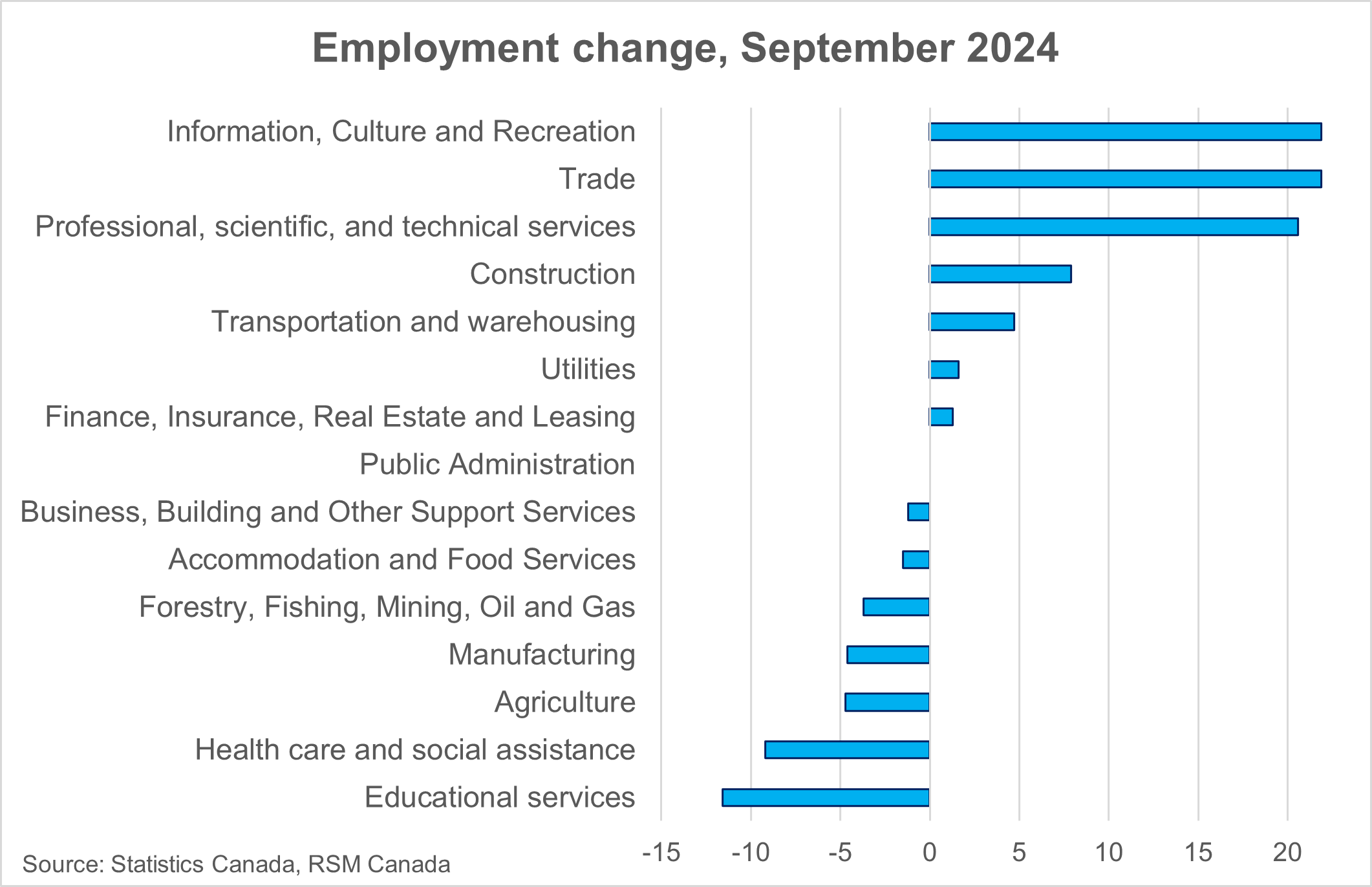The Canadian economy added 35,200 jobs in December, significantly greater than the 25,000 expected by economists. This partially offsets the 71,000 job losses in November’s Statistics Canada labor market survey. The unemployment rate fell by 0.3 percentage points…
Jobs
Canada added 47,000 jobs in September as jobless rate fell to 6.5%

Canada’s economy showed resilience in September, adding 47,000 jobs as the unemployment rate fell to 6.5 per cent—the first drop since January.
The increase in jobs, the largest since April, gives confidence that Canada can maintain a soft landing until the Bank of Canada’s rate cuts, which began in June, are sufficient for the economy to awaken.
Employers in the private sector have started to respond to the central bank’s shift to lower rates, adding 61,000 jobs in September—too early for celebration but a nod to the first signs of easing monetary policy.
Read more of RSM Canada’s insights on hiring, the economy and the middle market.
Public sector employment fell by 24,000, however. The economy added 112,000 full-time jobs, the largest gain since May 2022, while shedding 65,000 part-time jobs.
While we think the Bank of Canada should consider accelerating the rate cuts, it might stay the course with a 25 basis-point cut at each of the two remaining meetings this year.
Despite September’s positive jobs report, it’s worth noting that jobs numbers fluctuate wildly from month to month.
Rates are still too restrictive even after three consecutive cuts, and employers are holding off hiring until they fall further. The unemployment rate might reach 7 per cent before taking a meaningful downward turn.
As long as the Bank of Canada keeps reducing rates, hiring will pick up by early next year.
Average hourly wage growth fell to 4.6 per cent and is expected to fall further as labour demand cools.
The labour force participation rate fell to 64.9 per cent as some young people decided to delay entering the market because of limited opportunities and choosing to pursue further education instead.
In the soft labour market, the participation rate for youth has trended downward over the past year and a half.
The data
The services sector continued the expansion since the pandemic, adding 50,200 jobs while the goods-producing sector lost 3,600 jobs.
The employment rate fell by 0.1 percentage points to 60.7 per cent as population growth again outpaced job growth. Canada’s population has surpassed 41 million, primarily driven by immigration, which added a million people over the past year. Simply put, job growth in a period of high interest rates has not kept up.
Still, employment among youth aged 15 to 24 rose by 33,000, and core-aged women increased by 21,000.
Among industries, information, culture and recreation led the gain, adding 22,000 jobs, followed by trade with 21,900 jobs and professional services with 20,600 jobs.
Interestingly, educational services lost 11,600 jobs and health care 9,200, the most among all sectors. The decline in education jobs could stem from recent immigration restrictions, which cut new international students by nearly 40 per cent.











